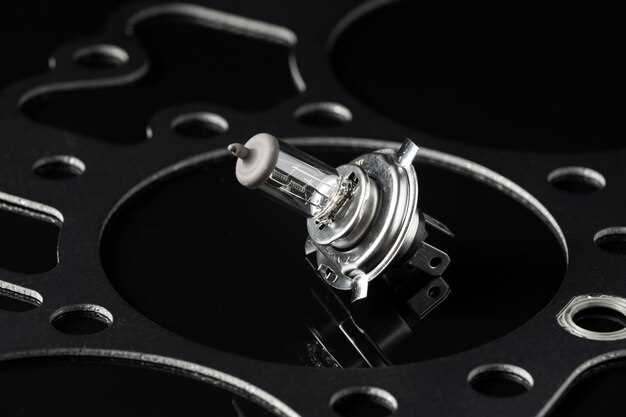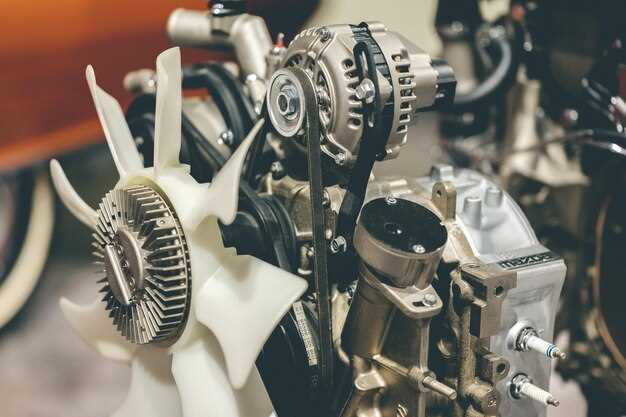
Racing Camshafts – What You Need to Know
- George Harris
- 0
- Posted on

In the world of high-performance automotive engineering, racing camshafts play a pivotal role in maximizing engine output and enhancing overall efficiency. These components are essential for any serious enthusiast looking to extract the utmost performance from their engine. By altering the timing and duration of the engine’s intake and exhaust valves, racing camshafts allow for improved airflow, which directly translates to increased power and torque.
When it comes to selecting the right racing camshaft, understanding the specific engine characteristics and intended application is crucial. The interaction between the camshaft design, engine configuration, and overall vehicle setup can significantly impact performance. Key parameters such as lift, duration, and lobe separation angle influence how well an engine breathes at various RPM ranges, making it essential to choose a camshaft that aligns with the goals of your racing endeavors.
Moreover, the installation of a racing camshaft often necessitates supporting modifications to ensure that the engine can effectively handle the enhanced performance. This includes upgrades to the valvetrain, tuning of the fuel and ignition systems, and potentially even modifications to the exhaust system. A comprehensive understanding of these factors not only ensures maximal efficiency but also preserves the longevity of your engine during rigorous racing conditions.
In this article, we will delve deeper into the intricacies of racing camshafts, providing insights on their design principles, selection criteria, and the key performance benefits they offer. Whether you are a seasoned racer or a novice tuning enthusiast, grasping the fundamentals of racing camshafts is essential for achieving superior performance on the track.
Choosing the Right Camshaft Profile for Your Engine Setup

Selecting the appropriate camshaft profile is crucial for optimizing the performance of your engine. The camshaft dictates the timing and duration of valve openings, significantly affecting engine efficiency, power, and responsiveness. To choose the right camshaft profile, you must consider several factors related to your engine setup and intended use.
The first aspect to evaluate is the engine type and configuration. Different engines, whether naturally aspirated or forced induction, respond uniquely to camshaft specifications. For instance, a naturally aspirated engine may benefit from a camshaft that promotes high-rpm power, while a turbocharged setup might require a profile that enhances low-end torque to reduce turbo lag.
Next, consider the lift and duration of the camshaft. Lift refers to how far the valve opens, while duration is the time the valve stays open during the engine cycle. Higher lift and longer duration generally increase airflow, but they can compromise drivability at low RPMs. A balance is necessary, depending on whether the vehicle is used for daily driving, track performance, or racing.
Additionally, valve overlap–where both the intake and exhaust valves are open simultaneously–plays a significant role in engine breathing. Increased overlap can enhance performance at high RPM but may result in a rough idle and decreased low-end power. Understanding your engine’s torque curve and power band will help you select the ideal overlap for your specific application.
Consider your vehicle’s intended use, as well. Street-driven vehicles typically require a camshaft that provides a blend of power, response, and reliability. In contrast, race engines can push the limits of performance, allowing for more aggressive cam profiles without concern for daily drivability. Assessing how you plan to use the vehicle will help narrow down your choices.
Lastly, don’t overlook compatibility with other engine components. Ensure that your chosen camshaft profile harmonizes with the existing intake, exhaust, and tuning setup. Changes in one area may necessitate adjustments in others to achieve peak performance. Consulting with a performance specialist or utilizing simulation software can provide valuable insights into the potential impacts of various camshaft profiles on your engine.
In summary, selecting the right camshaft profile involves analyzing the engine type, lift and duration, valve overlap, intended usage, and compatibility with other components. Taking these factors into account will lead to informed decisions, ensuring that your engine setup delivers the desired performance characteristics.
Tuning Camshaft Timing for Optimal Power Delivery
Tuning the camshaft timing is a critical aspect of optimizing engine performance. The camshaft controls the opening and closing of the engine’s intake and exhaust valves, which directly affects the engine’s breathing capability and, consequently, its power output. To achieve optimal power delivery, precise adjustments to the camshaft timing can be made to suit specific performance goals.
Understanding Timing Events
Camshaft timing involves manipulating the timing events, specifically how early or late the valves open and close in relation to the position of the piston. The valve overlap, or the time when both intake and exhaust valves are open, plays a significant role in the engine’s efficiency and power characteristics. Fine-tuning these events can enhance power delivery across different RPM ranges.
Advancing or Retarding Camshaft Timing
Advancing camshaft timing means adjusting the camshaft to open the valves earlier compared to the piston position, which can improve low-end torque. Conversely, retarding the timing allows valves to open later, often enhancing high-end power at the expense of low-end performance. The optimal setting depends on the desired application, whether it’s street driving or racing.
Using Adjustable Cam Gears
Installing adjustable cam gears is an effective way to easily modify camshaft timing. By changing the position of the camshaft relative to the crankshaft, tuners can make precise adjustments without the need to replace the camshaft. This flexibility allows for fine-tuning based on specific driving conditions and performance requirements.
Monitoring Performance Gains
After any adjustments, it is vital to monitor the engine’s performance through dyno testing or performance metrics. Analyzing torque and horsepower curves will help to identify the impact of timing changes, allowing further refinements. It is crucial to strike a balance between power gains and engine reliability, as extreme adjustments can lead to adverse effects.
Conclusion
Properly tuning camshaft timing is essential for maximizing power delivery in high-performance engines. Understanding the relationship between the timing events and engine performance enables tuners to make informed adjustments that enhance overall drivability. Whether through advancing or retarding timing or utilizing adjustable cam gears, careful planning and testing can lead to significant improvements in engine output.
Installing Racing Camshafts: Best Practices for Performance Enhancements

Installing racing camshafts is a critical step in enhancing engine performance. Proper installation ensures optimal functionality and longevity of the camshaft, as well as maximizes power output. Below are best practices to follow during the installation process.
1. Choose the Right Camshaft Specs: Before installation, ensure that you select a camshaft that suits your engine type and desired performance outcomes. Consider factors such as lift, duration, and overlap. Research your vehicle’s requirements and consult an expert if needed.
2. Gather Necessary Tools: Prepare the necessary tools and equipment before starting the installation. Common tools include a torque wrench, camshaft alignment tools, and various socket sets. Having everything on hand will streamline the process.
3. Engine Preparation: Before removing the old camshaft, clean the engine thoroughly. Remove any dirt, grease, or debris to prevent contamination. Ensure that the engine is at a comfortable working temperature to avoid any complications during the removal process.
4. Remove the Old Camshaft: Carefully disassemble the components holding the old camshaft in place. Pay close attention to every part and avoid any forceful actions to prevent damage. Document the placement of parts for easier reassembly.
5. Inspect Components: While the old camshaft is out, inspect related components such as lifters, pushrods, and bearings. Look for wear or damage, as replacing these parts might be necessary to ensure compatibility with the new camshaft.
6. Lubricate the New Camshaft: Before installation, apply assembly lube or engine oil to the new camshaft’s bearings and journals. Proper lubrication minimizes wear during startup and protects against premature failure.
7. Install the New Camshaft: Carefully position the new camshaft in the engine block. Use the alignment tools to ensure proper placement and avoid binding. Follow the manufacturer’s specifications for torque settings and bolt sequences when securing the camshaft.
8. Reassemble Engine Components: Once the camshaft is securely in place, reassemble all engine components according to your earlier documentation. Double-check connections and fasteners to ensure everything is tight and correctly oriented.
9. Check Timing: After reassembly, ensure that the camshaft timing is accurate. Incorrect timing can lead to engine damage or poor performance. Use a timing light and follow the specific timing procedures relevant to your engine model.
10. Perform a Break-In Procedure: After installation, perform a break-in procedure to allow the camshaft to seat properly. This may involve running the engine at varying RPMs for a specific duration, as recommended by the camshaft manufacturer.
By following these best practices, you can maximize the benefits of your racing camshaft installation, resulting in enhanced performance and reliability. Taking the time to prepare and execute the installation with care is crucial for achieving the desired results.
